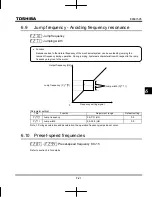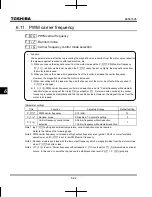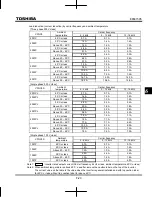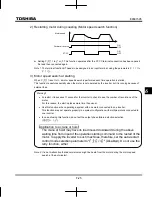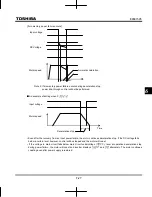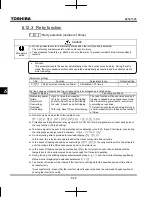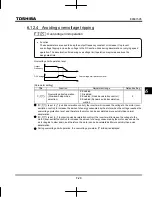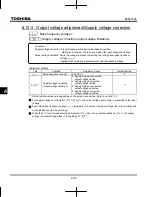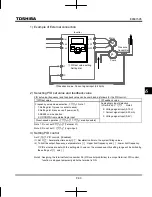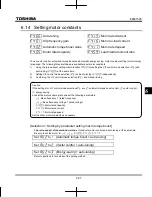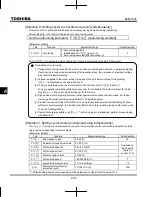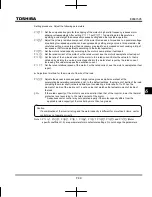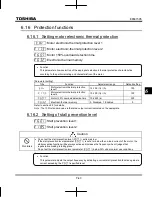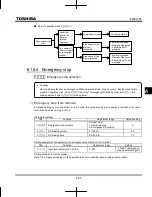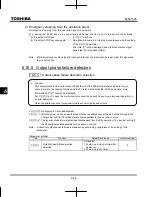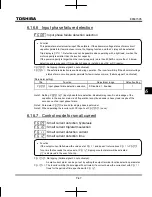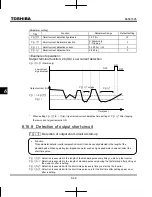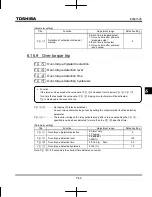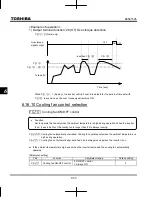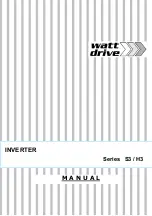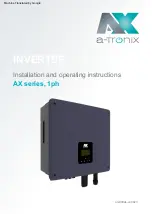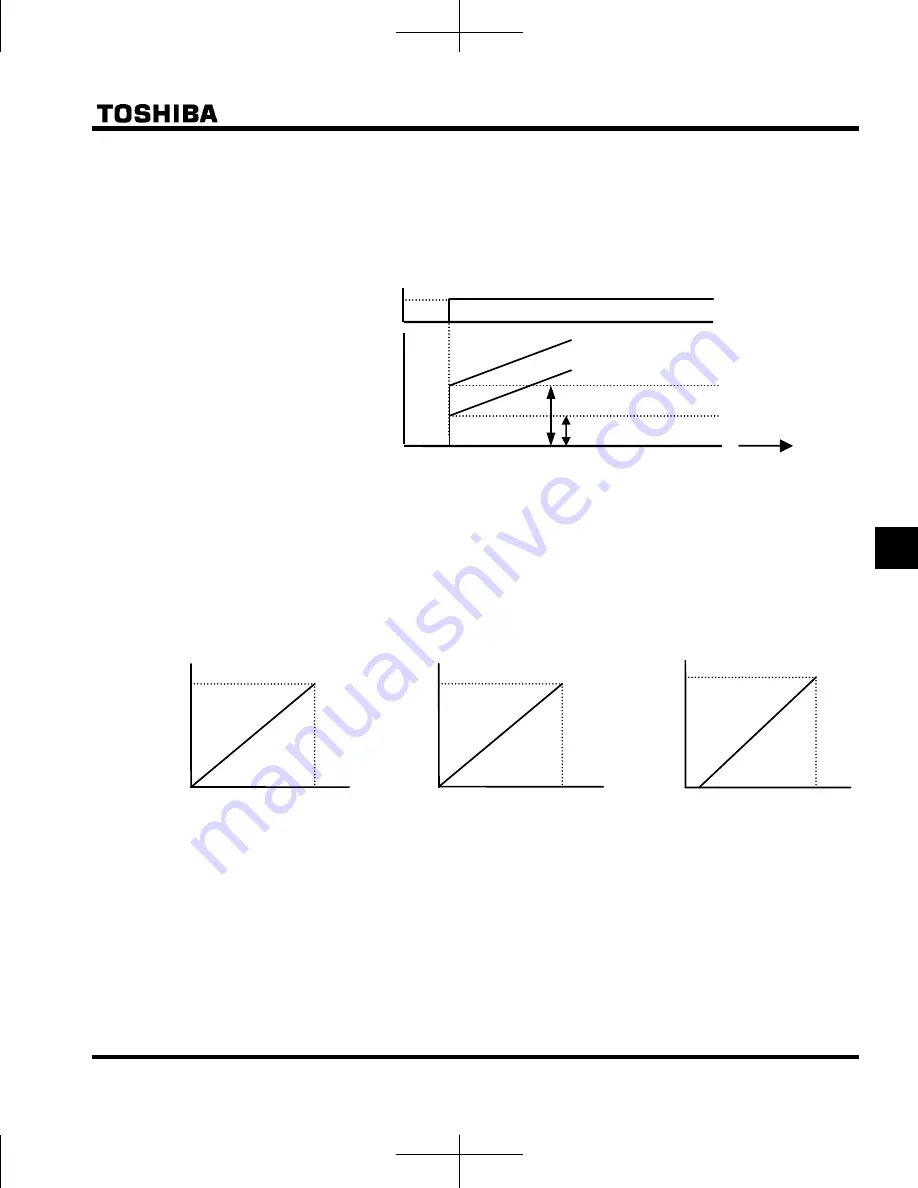
E6581595
F-35
6
(D-gain adjustment parameter)
This parameter adjusts the differential gain level during PID control. This gain increases the speed of
response to a rapid change in deviation (difference between the PID set value and the feedback value).
Note that setting the gain more than necessary may cause fluctuations in output frequency, and thus
operation to become unstable.
Assign the input terminal function number 52 (PID integral/derivative) to an input terminal, when the
input terminal is ON, it is possible to calculate integral/derivative amounts always as 0 (zero).
5) Adjusting feedback value
To use external feedback value (VI terminal), perform voltage-scaling adjustments (input point setting) as
required. Refer to section 6.5.2 for details.
Example of 0 - 10 Vdc voltage input
setting (
)
Example of 0 - 5 Vdc voltage input
setting (
)
Example of 4
–
20 mAdc current input
setting (
)
6) Setting the time elapsed before PID control starts
You can specify a waiting time for PID control to prevent the inverter from starting PID control before the
control system becomes stable, for example, after start-up.
The inverter ignores the feedback value, carries out operation at the frequency determined by the frequency
command value for the period of time specified with
and enters the PID control mode after a lapse of
the specified time.
High differential gain
Low differential gain
Previous deviation-current deviation
Feedback value
Time
VI input value
Out
put
fr
equency
(60Hz)
(0Hz)
0V
0%
5V
100%
VI input value
Out
put
fr
equency
(60Hz)
(0Hz)
0V
0%
10V
100%
VI input value
Out
put
fr
equency
(60Hz)
(0Hz)
4mA
20%
20mA
100%

